Bosnia and Herzegovina is a country in South-East Europe, on the Balkan Peninsula. Bordered by Croatia to the North, West and South, Serbia to the East, and Montenegro to the Southeast, Bosnia and Herzegovina is almost landlocked, except for 26 kilometers of Adriatic Sea coastline. The capital city is Sarajevo.
The country is home to three ethnic populations: Bosnians, the largest population of all three, Serbs in second and Croats in third.

Regardless of ethnicity, a citizen of Bosnia and Herzegovina is often identified in English as a Bosnian. In Bosnia and Herzegovina, the distinction between a Bosnian and a Herzegovinian is maintained as a regional, rather than an ethnic distinction. The country is politically decentralized and comprises two governing entities, the Federation of Bosnia and Herzegovina and Republika Srpska, with District Brčko as a de facto third entity.
The Dayton Peace Agreement, which ended the war in Bosnia and Herzegovina in 1995, established the current governance structure in the country.
The structure is comprised of a state level Council of Ministers and two entities that enjoy substantial autonomy - the Federation of Bosnia and Herzegovina (FBH) and Republika Srpska (RS). An autonomous Brcko District was added to the structure in 1999.
Since the Dayton Peace Agreement, the
country has made remarkable progress in post-conflict reconstruction, social
integration, and state building. Based on its impressive economic recovery and
sustained social stability, which have been supported by high levels of
international assistance, the country can be considered as a post-conflict
success story. It is now working towards accession to the European Union (EU)
and membership in the World Trade Organization (WTO).
An increasing development country since 1995:
Since 1995, Bosnia and Herzegovina has seen robust economic growth. The growth was initially driven by reconstruction efforts, but as of late it is mostly driven by private sector investments. GDP has more than quadrupled and merchandise exports have been growing 20% on average for the past 8 years.
Inflation was moderate during this period and amounted to 3.8 % in 2008 (year-on-year), despite the accelerated growth during the first half of the year as a result of fuel and food price growth.
The level of external public debt has been relatively low and shrinking, but it has been widening with the onset of the global crisis; it was estimated at 17 % of GDP in 2008 and is expected to increase to 19.5 in 2009.
Until recent years, the size of the current account deficit was estimated at around 20% and was seen as a significant external risk. However, the deficit has been reduced in recent years because of improved accounting at the Central Bank, as well as rapid growth of exports and remittances; it amounted to 13% of GDP in 2007 and around 14.5 percent in 2008 (widened in 2008 largely as a result of higher fuel and food prices).
Foreign reserves have steadily grown until October 2008, but have since started shrinking, albeit at a pace that is not alarming. The growth of exports was also faster than anticipated, reaching 38% of GDP in 2007.
While significant progress has been made on structural reforms since 1995, the reform pace over recent years has been slow and there is a large and overdue reform agenda. The banking sector has been largely privatized and modernized, and other financial sector reforms have been well advanced. Yet privatization of other state-owned companies has occurred at a slow pace, and the private sector's contribution to GDP is still lower than in a number of other countries in the broader region.
Transportation figures
The main railway connects the Croatian port at Dubrovnik to Sarajevo and crosses the Sava before returning into Croatia at the northern border. The country's total railway track is 1,021 km (634 mi). In 2002, there were 21,846 km (13,575 mi) of highways, of which 14,020 km (8,712 mi) were paved. Ports include those at Bosanska Gradiska, Bosanski Brod, Bosanski Samac, and Brcko. All are inland waterway ports on the Sava; however, none is fully operational. Large sections of the Sava are blocked by downed bridges, silt and debris. There is no merchant marine. In 2001 there were 27 airports, 8 of which had paved runways. In 2001, 65,000 passengers were carried on scheduled flights.
Main sectors:
Energy
Taking into consideration the high market demand for energy in the region, the Government and entities of Bosnia and Herzegovina are currently developing major projects regarding power generation facilities. These projects offer unique opportunities for companies willing to engage in the energy in the region. The theoretical potential of hydropower in Bosnia and Herzegovina is calculated at 8000 MW, the technical potential 6800 MW and the economic potential 5600 MW. With an installed capacity of 2052 MW (53% of the total electricity generated), hydropower is highly significant in Bosnia and Herzegovina, although its potential is far from being fully exploited yet (37% of its economic potential). The potential for investors in construction projects on the Drina, Neretva, Bosna, Una, Trebisnica and Vrbas rivers and in the development of more than 200 small hydroelectric power plants on other sites is enormous.
Mining
The country's top seven industries are, in order, steel, coal, iron ore, lead, zinc, manganese and bauxite. Mining output, which accounted for more than 10% of industrial production, rose by 10.4% in 2000. Iron ore production was centered in Vareš, Jablanica, Ljubija and Radovan; lead and zinc ore was mined at Olovo, Vareš and Srebrenica; manganese ore operations were centered at Bosanska Krupa; bauxite deposits were worked at Vlasenica, Zvornik, and Banja Luka; substantial nickel deposits had been worked near Visegrad; and substantial nickel deposits had been worked near Visegrad.
Agriculture
Agriculture production in Bosnia and Herzegovina is dominated by crop production, with livestock production representing less than one third of the total output. Slight increase of this share in recent years is due to the increase in cow milk production. The economically most important sub-sector of B&H agriculture is vegetables. Of considerable importance are also fresh cow milk, maize and potatoes
High availability of grassland and mountainous pastures suggests a potential advantage for production of livestock and diary products. Orchards and vineyards cover approximately 100 000 hectares. The structure of the agricultural sector is characterized by small sized family farms which, to a large extent, produce for home consumption – over 50% of agriculture holdings are estimated to be less than 2 ha; the state firms, generally much larger, are mostly not operating or in difficulties often due to not finalized state of privatization.
Industries
Mining and mining-related activities make up the bulk of Bosnia and Herzegovina's industry. Steel production, vehicle assembly (tank and aircraft), textiles, tobacco products, wooden furniture, and domestic appliances are also important industries. Other important sector resources and activities are: coal, iron ore, lead, zinc, manganese, bauxite, and oil refining.
Key points to invest in Bosnia and Herzegovina?
- One of the most important growth rate of the area ( average of 5% per year since 2000)
- One of the lowest inflation rate of the area (average of less than 5% per year since 2000)
- UE and WTO candidacy
- One of the most stable currency of the area (linked with the €uro evolution)
- A well-developed banking sector
- A low companies imposition level (10%)
Other figures:
Export:
$5.194 billion
(2008 est.)
Export commodities:
Metals, clothing, wood products
Export partners in 2008:
- Croatia 20.7%
- Slovenia 16.7%
- Italy 16.7%
- Germany 13%
- Austria 10.3%
- Hungary 4.8%
Imports:
$12.29 billion
(2008 est.)
Imports
commodities
Machinery and equipment, chemicals, fuels,
foodstuffs.
Imports partners (2008):
- Croatia 24.6%
- Slovenia 12.7%
- Germany 12.3%
- Italy 10.5%
- Hungary 6.6%
- Turkey 6.5%
- Austria 6,3%
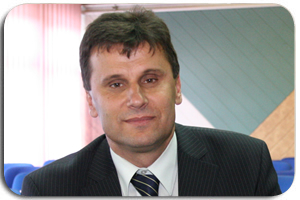 Fadil NovalićCEOCIMOS TMD Ai Fadil NovalićCEOCIMOS TMD Ai | 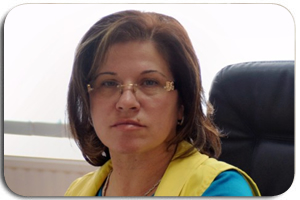 Elizabeta JosipovićOwner and DirectorSconto-prom Elizabeta JosipovićOwner and DirectorSconto-prom | 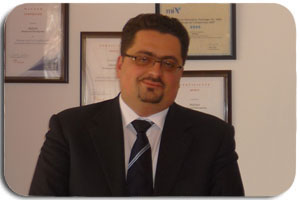 Kenan CrnkićGeneral ManagerPRIZMA Microcredit Foundation Kenan CrnkićGeneral ManagerPRIZMA Microcredit Foundation |  Michael Christian VogtCEOHypo Alpe-Adria Bank Michael Christian VogtCEOHypo Alpe-Adria Bank |
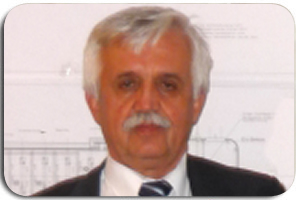 Niko Budimir / Marinko ZekoDirector / Project ManagerTOM Uskoplje Niko Budimir / Marinko ZekoDirector / Project ManagerTOM Uskoplje |  Tie SosnowskiPresidentForeign Investors Council Tie SosnowskiPresidentForeign Investors Council | 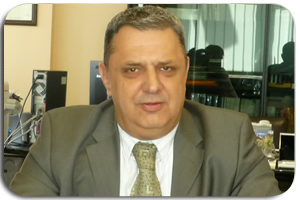 Amir RizvanovićDirectorVakufska Banka Amir RizvanovićDirectorVakufska Banka | 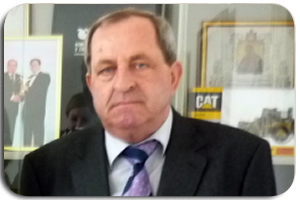 Ljubomir CubićOwner and General ManagerNiskogradnja Ljubomir CubićOwner and General ManagerNiskogradnja |
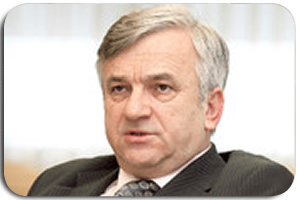 Nedeljko ČubrilovićMinister of Transport and Communications of the Republika SrspkaMinistry of Telecommunications and Transport of the Republika Srspka Nedeljko ČubrilovićMinister of Transport and Communications of the Republika SrspkaMinistry of Telecommunications and Transport of the Republika Srspka |  Denis Prcić / Clifford BondChairman of the Board of Trustees / Vice-President, International AffairsAmerican University in Bosnia and Herzegovina Denis Prcić / Clifford BondChairman of the Board of Trustees / Vice-President, International AffairsAmerican University in Bosnia and Herzegovina |  Haris KuskunovićCEO of MercatorMercator Haris KuskunovićCEO of MercatorMercator | 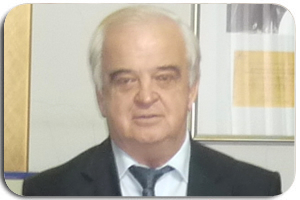 Narcis DžumhurPresident of the Management BoardRailways of the Federation of Bosnia and Herzegovina Narcis DžumhurPresident of the Management BoardRailways of the Federation of Bosnia and Herzegovina |
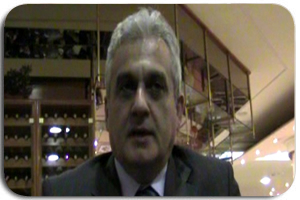 Ljubo BešlićMayor of MostarMunicipality of Mostar Ljubo BešlićMayor of MostarMunicipality of Mostar | 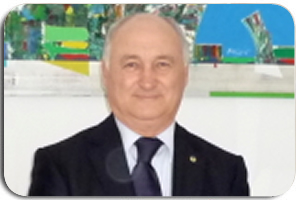 Branko RoglićOwner of OrbicoOrbico Branko RoglićOwner of OrbicoOrbico | 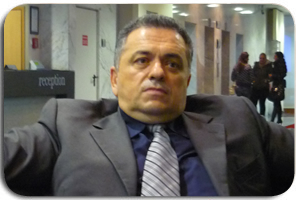 Salih ŠabovićManaging DirectorGiprom Salih ŠabovićManaging DirectorGiprom | 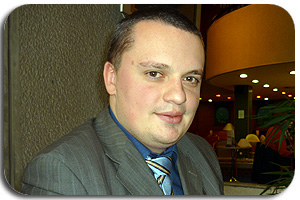 Fehim BabićOwner of Virtus Rent a CarVirtus Rent a Car Fehim BabićOwner of Virtus Rent a CarVirtus Rent a Car |
 NISKOGRADNJA d.o.o. LaktašiConstruction and Infrastructure NISKOGRADNJA d.o.o. LaktašiConstruction and Infrastructure |  Sconto-promTrade & Industry Sconto-promTrade & Industry |  Orbico GroupTrade & Industry Orbico GroupTrade & Industry |  TOM UskopljeConstruction and Infrastructure TOM UskopljeConstruction and Infrastructure |
 PRIZMA Microcredit FoundationFinance PRIZMA Microcredit FoundationFinance |  Vakufska BankaFinance Vakufska BankaFinance |  Railways of the Federation of Bosnia and HerzegovinaTransport Railways of the Federation of Bosnia and HerzegovinaTransport |  Hotel “Hollywood” SarajevoTourism Hotel “Hollywood” SarajevoTourism |
 Hotel Hayat SarajevoTourism Hotel Hayat SarajevoTourism |